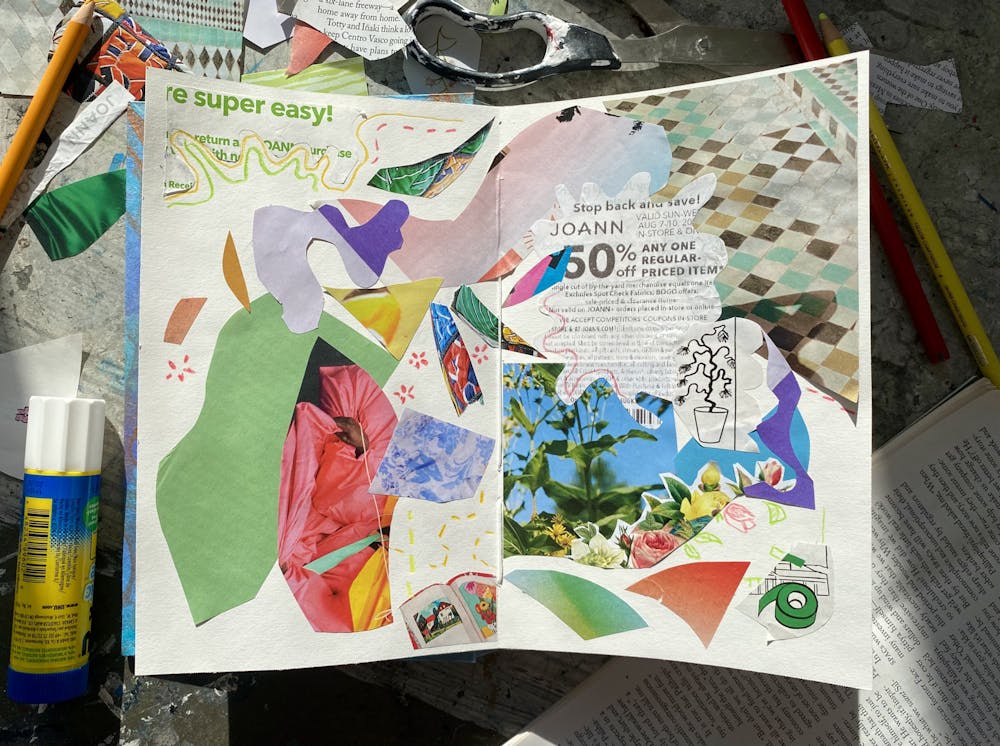Since around summer 2020, “casual Instagram” and other “casual” forms of social media have taken over celebrity profiles—not to mention those of the general public. Despite conflicting opinions on the trend, casual Instagram has many abandoning highly edited posts in favor of blurry mirror pictures and overly zoomed-in photos of their dog. Casual Instagram speaks to an instinct to just record our lives, even the nitty-gritty, day-to-day elements of it, to look back on later.
While the photos themselves are unedited, there’s a kind of curation that can evolve out of a casual Instagram account. For example, one might post a series of heart-shaped objects or quotes about sisterhood, so that a theme emerges even from a “casual” account. Digital collections have even made their way to other platforms, including the recent trend of TikTok photo collages. Scrapbooking, then, is the non-digital equivalent. Which is why scrapbooking, of all things, is your new alternative to casual social media.
The scrapbook, however, is unique from other forms. When I graduated high school, my grandmother gifted me the scrapbook she’d been putting together since I was born. It was unlike most gifts I’ve ever received; I could run my finger over the photographs and stickers spanning 18 years. There’s something to be said for the tactile nature of a scrapbook. For the same reason that those who grew up in the digital age turn to vinyls and camcorders, the analog format of scrapbooking demands the practice of attentiveness. Documenting a life with paper scraps in one’s own handwriting takes a different kind of time and care. And that attention is rewarded by a scrapbook’s permanence. Many also curate physical scraps on dorm walls or through computer stickers. But we move locations, platforms change, passwords are lost. A scrapbook is physical, tangible, portable, and can therefore be kept and cared for.
The real advantage to the scrapbook, however, is its intimacy. An Instagram account, a phone case, or even the walls of your dorm are open to public perception. This creates an awareness of the external gaze, conscious or not, that affects how we curate. In my opinion, that awareness is the root of the frustration casual Instagrams have stirred up. There are numerous articles lamenting the performance that is casual Instagram, despite its facade of nonchalance. Yet I want to give credit to owners of “casual” accounts. There is nothing inherently wrong with the curatorial instinct of Instagram; we just must also acknowledge that accounts exist in the public eye. The solution, then, isn’t necessarily abandoning a more casual aesthetic and returning to carefully perfected profiles. Instead, scrapbook.
Scrapbooks, unlike profiles, can remain entirely private. On some level, you have to invest mental and emotional energy into posting casually—it’s hard to document yourself honestly while simultaneously being aware of how you will come across. Scrapbooking, on the other hand, requires no extra energy. Journaling, then, is a private practice you might turn to. But, at least for me, it can be somehow difficult to write without imagining a disembodied audience, and journaling becomes tiring. Because scrapbooking is visual and tactile, it’s harder to create a scrapbook “for” anyone other than yourself—unadulterated self-expression becomes intuitive.
It’s uniquely meditative to sit up late at night, sorting bits of receipts and paper animals you rescued from your coat pockets and arranging them on a page. You could start today, even if you don’t pick it up again for three months–no one will know. Because scrapbooking is an art of curation that’s meant for you alone.





